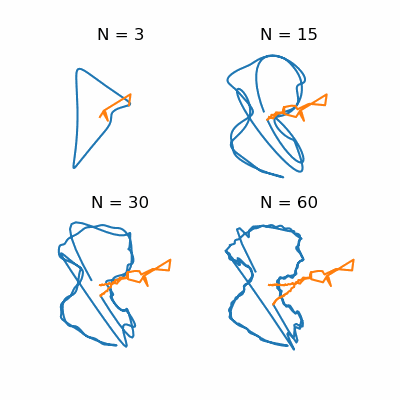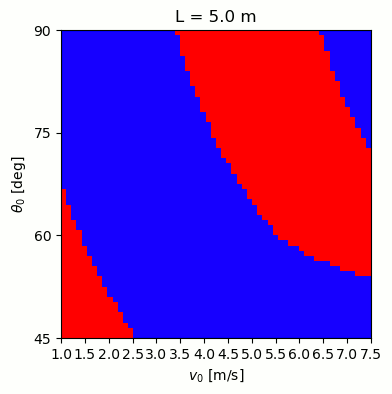Marika is an avid sailor, and former Fleet Captain of the University of Michigan Sailing Club. In hearing about her exploits on the high seas (or Huron River, as the case may be), I've often thought about the mechanics of sailing. Specifically, I was curious if I could model the forces involved in maneuvers like tacking and jibing.
The model I came up with was to consider two connected forces on the boat: wind hitting the sail, and drag from the water. When wind hits the sail, the air bounces off, imparting momentum in the direction of the surface of the sail. The magnitude of the momentum transferred will be proportional to the dot product of the sail direction and the wind direction – maximum is when the wind hits the full face and zero when it's perpendicular. The drag from the water will be similar to the wind hitting the sail, but this time we're looking at the shape of the hull for each bit of water that hits the boat. Both these forces depend on and change the velocity of the boat, so we iterate the calculation until we find the equilibrium. To do that, we need to come up with a model for the hull of the boat.
I couldn't find any existing mathematical models for hull shape, but looking at common designs, I came up with this concept: Take two halves of an ellipse with semi-axes a and b, and put them a distance W apart. As long as W is less than 2a, the halves will intersect at each end. Now measure L from one end, and cut the remainder off. Using numbers for the width and length from here, and picking a and b that seemed reasonable, here's what I came up with:
Now to the simulation: We consider a wind going from left to right and try different orientations of the boat and sail. For each case, we start with zero velocity and calculate forces from wind and drag. Those forces give a new velocity, and we repeat until there's little change. The final velocity is shown by the arrow. Now, I didn't want to spend a lot of time figuring out the exact momentum transfer for the wind and drag, so I fudged the scaling to get reasonable results. Even with this super simple model though, we can see cases where it's possible to sail into the wind! (Look for the arrow pointing left.)
As with all of my posts, I don't recommend trying this yourself based on my calculations, but I'm hoping Marika will give me some experimental experience in the future!




















































